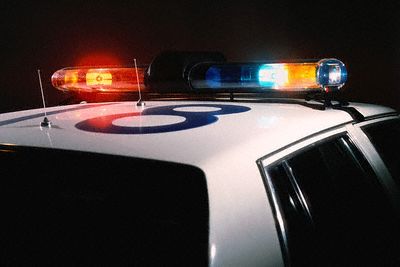Introduction to DUI Roadside Testing
There are a lot of common misconceptions in relation to the Standardized Field Sobriety Tests (SFSTs) which are supposed to be used by the police to determine who they are going to arrest for a DUI. These tests are normally the first thing the officer uses to screen drivers and the results are normally used in court by the prosecution to try to prove you were drunk.
 But the truth is that it doesn’t really matter how you do on these roadside tests as they are infrequently explained correctly, infrequently scored correctly and infrequently graded correctly. If you smell of alcohol, you are, as one police officer said on video, “going downtown for the machine or the blood draw to figure it out”.
But the truth is that it doesn’t really matter how you do on these roadside tests as they are infrequently explained correctly, infrequently scored correctly and infrequently graded correctly. If you smell of alcohol, you are, as one police officer said on video, “going downtown for the machine or the blood draw to figure it out”.
However, there are many intricacies and procedures that must be followed in order for the tests to yield proper results. These tests are also based on assumptions about the effects of alcohol on an average person. This becomes a big problem seeing that everyone is different and thus not “average”.
At The McShane Firm, all of our lawyers are certified as Instructors of the SFSTs which is the highest level of certification in these tests. Most police officers do not have close to this amount of training. Because of the importance of these tests, I decided to post some detailed information about the SFSTs so we can all better understand the truth about them.
The history of the SFST
Rewind to the 1970’s. People were traveling greater distances in their cars and dependence on cars to go places were becoming more and more popular and unfortunately, so were highway fatalities. In recognition of this, the National Highway Traffic Safety Administration (NHTSA) was established in 1970 which was placed under the U.S. Department of Transportation.
By the late 70’s, drunk driving was becoming a growing problem in the U.S. At the time, the whole process of a DUI was based on the opinion of one person: the police officer. If the cop thought you were drunk, then you were going to be arrested. NHTSA saw that there were major discrepancies and disconnects which stemmed from the fact the police, at that time, were not given proper training in judging whether or not a driver was impaired. Furthermore, the police were not all using the same tests to arrive at their subjective conclusions. Therefore, NHTSA decided that it was necessary to have a standardized procedure that was supposed to be scientifically backed for use in roadside conditions. And so began…
The Search for the Perfect Test
NHTSA studied a battery of tests in hopes of finding the tests that yielded results that correlated with actual blood alcohol content (BAC). They took a group of people, got them intoxicated to a known level, and measured the results. In all they looked at over 300 different tests including some rather bizarre ones like:
- The coin pick up test- Coins were scattered on the ground and the subject had to pick up only the ones that were heads-up.
- The tracing test- Subjects had to trace different letters and symbols, much like what you would expect from a pre-schooler.
- The alphabet test- subjects were asked to read the alphabet backwards or by skipping every third letter backwards.
There were also some common misconceptions that were also found. One of the most common misconceptions, in that an “odor of alcohol”, was significant and could predict what someone’s BAC was or that the person was not safe to drive. So they designed a test. This test involved volunteer drinkers that were dosed to a specific level and different highly trained officers were brought in to “judge” someone’s level of intoxication. After conducting these tests, these scientist concluded that there was no evidence of any sort of correlation between BAC level and the smell of alcohol. This was known as the Moskowitz study.
At the end of researching and comparing all of these different tests, there were three “winners”.
The Winners Are
- The Horizontal Gaze Nystagmus (Eye Tracking Test)
- The Step Walk and Turn
- One Leg Stand
These tests were determined by NHTSA researchers to yield the best results out of all of the others. But are they really the perfect test??? In our next several posts we will show why they are not.
The Beginning of the Problem
However, one very important point is that even the researchers who developed these tests saw their flaws and their limitations. Specifically, they wrote in all of the training manuals (in all caps) that:
IT IS NECESSARY TO EMPHASIZE THIS VALIDATION APPLIES ONLY WHEN;
-THE TESTS ARE ADMINISTERED IN THE PRESCRIBED, STANDARDIZED MANNER.
-THE STANDARDIZATION CLUES ARE USED TO ASSESS THE SUSPECT’S PERFORMANCE
-THE STANDARDIZATION CRITERIA ARE EMPLOYED TO INTERPRET THAT PERFORMANCE.
IF ANY ONE OF THE STANDARDIZED FIELD SOBRIETY TEST ELEMENTS IS CHANGED, THE VALIDITY IS COMPROMISED.” R2/00 VII-3; R1/02 VIII-19; R9/04 VIII-19; R2/06 VIII-19
Unfortunately, the vast majority of times, police officers do not administer these tests in the right way which leads to false positives. We will examine this further in our future posts.
One response to “Roadside DUI Test: Standardized Field Sobriety Tests Explained”